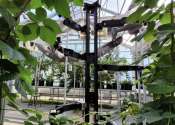An effective strategy to remotely operate snake robots
Animals have always been a great inspiration for robotic systems, as they offer fascinating natural examples of how different body structures can produce specific movements and locomotion styles. While most animal-inspired ...









